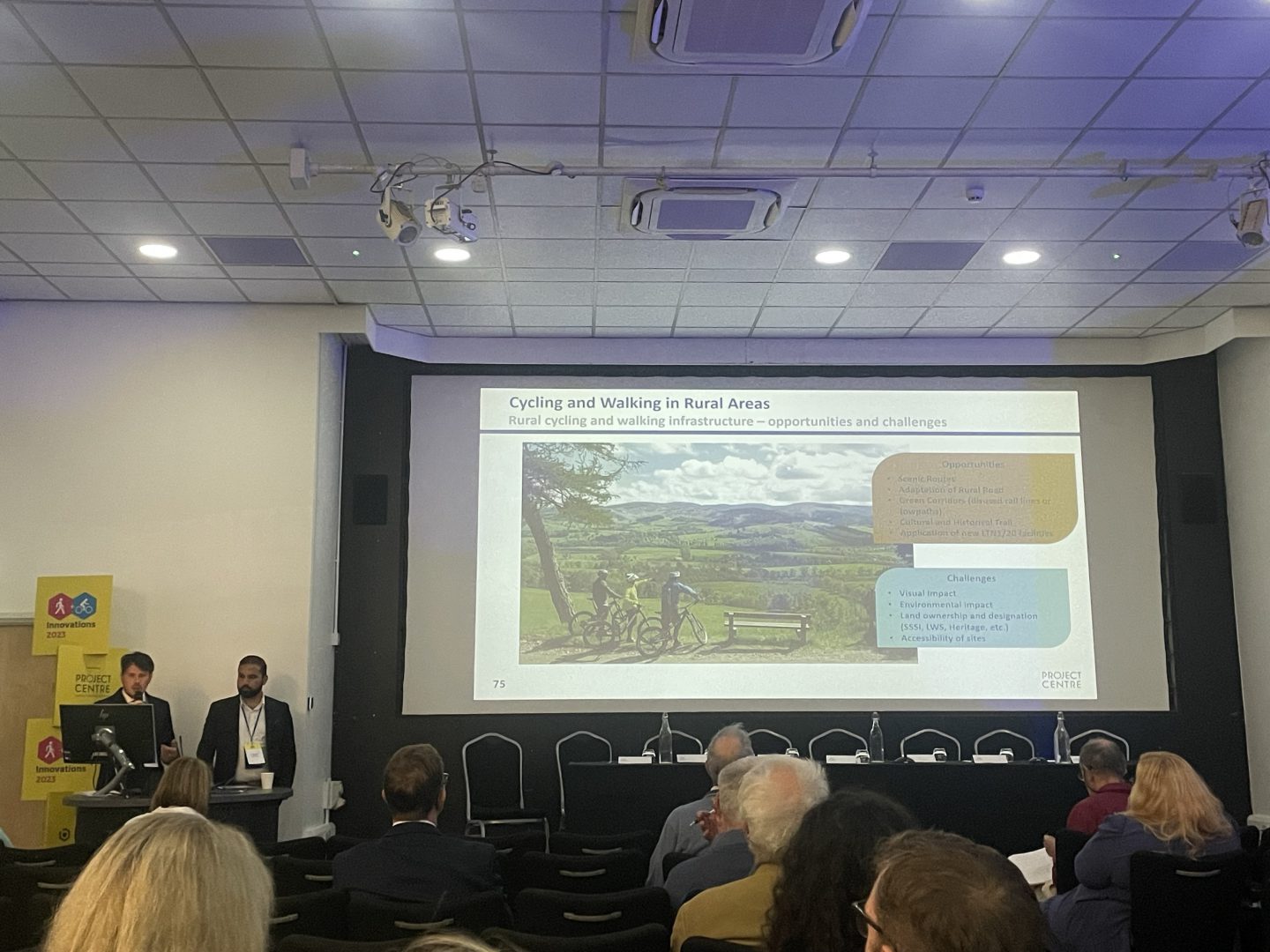
Our multidisciplinary team attended the latest Cycling and Walking Innovations Conference in Manchester, discussing the best opportunities to unlock active travel across the UK.
In May 2023, the UK government made £200 millions of funding available for local authorities to encourage and enable more cycling and walking trips. Active Travel England’s National Active Travel Commissioner, Chris Boardman, commented: “Our focus is on working with councils to get these schemes built swiftly. We’ll be working together to ensure the projects are well designed and effective to improve lives nationwide”.
At this stage, the government and local authorities’ objectives are very clear. It is harder to get communities on board of the process and also create tailored designs that work across the whole country.
Increasing cycling and walking brings along numerous advantages for the environment and the economy of a place. By improving active travel infrastructure as well as reducing congestion and collisions on roads, we can improve air quality and create a more attractive environment for visitors, residents, and local businesses.
However, not all boroughs and communities have the same issues and needs, and engineers must understand the unique challenges and opportunities of delivering walking and cycling infrastructure in different areas.
Creating innovative walking and cycling space: rural vs urban cityscapes
Our Associate, Hardeep Dhand, and Principal Engineer, Niccolo Conti, spoke at the Cycling and Walking conference during the session “planning for activity”. Their presentation mainly focussed on the differences in delivering active travel between rural off-carriageway paths and built-up urban environments.

Project Centre has expertise in working with local authorities and private sector across the country. Through working for different projects in rural areas, we found that the generalised aim is to provide:
- Sustainable connectivity to smaller and remote communities
- Accessibility to services and leisure opportunities
- Enhanced mobility to promote health and wellbeing
- Natural, cultural and historical preservation, fostering eco-tourism and benefitting local businesses
Some of the challenges to adapting active travel and green corridors in rural areas include overcoming visual and environmental impacts as well as causing issues with accessibility and land ownership.

In urban areas, we found that the aim is:
- Providing a cleaner mode of transport to improve air quality and attractiveness of space
- Reducing congestion and increasing road safety
- Incorporating existing and historic routes and reallocating these for pedestrians and cyclists
One of the main challenges to designing active travel in cities is getting most of the community engaged to create a sense of ownership and responsibility as well as driving real behaviour change.

The image below some examples of the different approaches we take when delivering schemes for urban versus rural areas.

Through working with different local authorities and clients, we learnt the best techniques to deliver schemes that work for both the community and the Councils.
Designing transport infrastructure in the rural area of Herefordshire
Herefordshire Council appointed Project Centre to deliver a transport infrastructure scheme designed to encourage a mode shift across the city and contribute to the growth of Hereford.
Promoting active travel was identified as the best way to achieve this, by providing robust infrastructure improvements to the designated Hereford Enterprise Zone, a key employment area of the city.
The project consisted of 44 schemes to improve the continuity, legibility, attractiveness and level of general provision of routes. The scope included minor treatments such as upgrading signage and road markings and more significant road alterations and junction reconfigurations such as upgrading a roundabout to T-junction. Due to the nature of the area, we could use technological advancements to deliver the project, such as solar lighting, as well as implementing innovative measures like cycle priority crossing. The Council was happy with our team delivering the project on time and within budget as well as helping to redistribute movement and link the main urban areas.
Creating active travel in Kensington High Street
The Royal Borough of Kensington and Chelsea commissioned Project Centre to extend their previously implemented 20mph limit scheme across the whole borough, allowing increased walkingl and cyclists usage within the borough. Our team surveyed the entire borough to determine suitable sign and road marking locations.
One of the key objectives was to minimise clutter and visual intrusion of the 20mph signs and road markings. RBKC has a strong aesthetic appeal, and it was important to keep their identity consistent. The main challenge for the client was being able to get residents’ support even though they were not particularly pro-cycling. Following their consultation, we have proposed suitable measures and encouraged many residents to actively take on sustainable travel.
Enabling sustainable active travel across the country
Engineers, local authorities and communities need to be on the same page in their willingness to prioritise active travel both in rural and urban environments. Due to the differences in routes, we must gain a deep understanding of the usage and the goal for that specific area. Engineers and designers must also work together to create easily navigable, safe, direct routes as well as green spaces to attract more pedestrians and cyclists.


